There’s no doubt that gaming headsets are taking over the market these days. Several gamers and WFH professionals have purchased these headsets for home use in response to the pandemic.
As a result, they’re all happy. Therefore, we decided to compare three dynamite models. This is a comparison between the HyperX Cloud II vs. SteelSeries Arctis 5 and the HyperX Cloud Alpha gaming headset. This might be a good day if you are planning to update your headset.
HyperX Cloud II, Steelseries Arctis 5, and HyperX Cloud Alpha are all wired headsets. Detailed descriptions of each are provided below
[amazon box=”B07FZQJ8PY,B00SAYCVTQ,B074NBSF9N” template=”table”]SteelSeries Arctis 5 vs. HyperX Cloud II and Cloud Alpha Comparison Chart
| Model | HyperX Cloud II | SteelSeries Arctis 5 | Cloud Alpha |
| Weight | 0.7 lbs | 0.69 lbs | 0.7 lbs |
| Length | 21.3 cm | 22.9 cm | 18.5 cm |
| Width | 15.0 cm | 21.6 cm | 15.2 cm |
| Height | 10.2 cm | 5.1 cm | 8.1 cm |
| Type | Over-ear | Over-ear | Over-ear |
| Transducer | Dynamic | Dynamic | Dynamic |
| Transmitter Required | No | No | No |
| Enclosure | Closed-Back | Closed-Back | Closed-Back |
| Noise Canceling | No | No | No |
| Wireless | No | No | No |
| Wired | Yes | Yes | Yes |
| Lowest Frequency | 15Hz | 20Hz | 13Hz |
| Highest Frequency | 25000 Hz | 22000 Hz | 27000 Hz |
| OS Compatibility | Not OS specific | Not OS specific | Not OS specific |
| Ease Of Use | Okay | Good | Decent |
| Volume Control | Yes | Yes | Yes |
| Call/Music Control | No | No | No |
| Channel Mixing | Yes | Yes | No |
| Microphone Control | Mute/Unmute | Mute/Unmute | Mute/Unmute |
| Additional Controls | Surround Sound | No | No |
| Microphone | Yes | Yes | Yes |
| Noise Canceling Control | No | No | No |
| Virtual Surround | Dolby 7.1 | DTS 7.1 | No App |
| Microphone Style | Boom, Detachable Boom | Boom | Boom, Detachable Boom |
| Battery Type | No Battery | No Battery | No Battery |
| Passive Playback | Passive Headphone | Passive Headphone | Passive Headphone |
| App Support | No App | SteelSeries Engine | No App |
| Bluetooth Version | No Bluetooth | No Bluetooth | No Bluetooth |
| Detachable Cable | Yes | Yes | Yes |
| USB Audio | USB Type A | USB Type A | No |
| Connection | 1/8″ TRRS | Mini B 8-Pin | 1/8″ TRRS |
| Base/Dock Type | Wired USB Dongle | Wired USB Dongle | No Base/Dock |
| Impedance | 60 Ohms | 32 ohm | 65 Ohm |
| Stereo Speakers | Yes | Yes | Yes |
| Neodymium Magnet | Yes | Yes | Yes |
| Passive Noise Reduction | Yes | Yes | Yes |
| Warranty | 2 years | 1 year | 2 years |
SteelSeries Arctis 5 vs. HyperX Cloud II and Cloud Alpha Descriptive Comparison
Design
HyperX Cloud II
HyperX Cloud II has a simple and elegant design. The arching hinges are similar to those on Beyerdynamic headphones. Moreover, the mic can be detached, making them more convenient for casual use. They’re a bit bulky, and their bright logos on the ear cups might not appeal to everyone. As a plus, it stands out without being overly flashy with its simple black and red color scheme.
SteelSeries Arctis 5
Although the Arctis 5 shares similar design features with the Arctis 7, its headband is quite different. Their ski-band headband is still present, but the frame is made of plastic and is relatively rigid, giving it a cheaper appearance. It still has the same design, but the backplates of the cups have RGB lighting.
Overall, the design of the headphones is fairly simple and isn’t as flashy as some other gaming headphones we have tested. In addition, the microphone can also be retracted into the left ear cup to give it a more casual look, but these headphones still won’t be suitable for outdoor use. There are two color choices for this headset: black and white.
HyperX Cloud Alpha
There is nothing too flashy about the HyperX Cloud Alpha’s design. Their look is almost identical to the HyperX Cloud II, but their yokes are perforated, and their ear cups are slightly different. In addition to their detachable microphone, they’re a bit bulky, and their bright logos might not appeal to everyone.
[amazon box=”B07FZQJ8PY,B00SAYCVTQ,B074NBSF9N” template=”table”]COMFORT
HyperX Cloud II
A padded headband and big, well-padded ear cups make these headphones comfortable. They are comfortable but a bit tight around the head. Unlike some of the other gaming headphones, these headphones evenly distribute the pressure around your ears. Despite this, they tend to be somewhat tiring after prolonged gaming sessions.
Steelseries Arctis 5
Each ear cup comes with soft, fleshy ear cushions made of breathable material. As a result, your ears will not sweat because air can easily move between them. The cushions have enough depth to prevent your ears from touching the driver. It hasn’t been a problem if you have a medium to large head.
They are comfortable enough to wear all day. Instead of the pressure being evenly distributed throughout, I noticed that the top of the ear cups was more intense than the bottom. There is a light clamping force. You can adjust the headband to fit heads of all sizes.
HyperX Cloud Alpha
Headbands are really thick. There are many similarities between this headset and others from HyperX. There are some changes to the ear cushions, but they are still really comfortable. The retail price of these is $100. So, HyperX calling them the Alpha would make you think they are elite headsets. As the name suggests, you will feel like you have a cloud on your head. In terms of comfort, I have no concerns.
Related Post: SteelSeries Arctis 7+ vs Arctis 9
Build Quality
HyperX Cloud II
HyperX Cloud II has an excellent build quality. It feels sturdy yet flexible enough that it won’t snap when overextended.
The ear cups are well made and resilient enough to withstand several drops without significant damage. In addition, the exposed audio cable connecting the ear cups is a potential weak point. This model comes with shiny backplates with the HyperX logo that could get scratched up over time.
Steelseries Arctis 5
The Arctis 5 feels more affordable than the other models in the lineup. This model has a plastic headband frame, so it does not feel as robust as the Arctis 7 2019 Edition. The cups are, however, the same and should hold up to a few accidental drops. Furthermore, the retractable microphone feels sturdy and malleable.
HyperX Cloud Alpha
The HyperX Cloud Alpha feels very sturdy and well-built. The aluminum frame is strong and flexible, and the ear cups are fairly dense, so they should be able to withstand some accidental drops. Alpha headphones do not have shiny back plates on their ear cups that can be scratched up easily by regular usage, unlike HyperX Cloud II. Generally, they feel well-built and durable but don’t look as premium as SteelSeries Arctis Pro Wireless.
[amazon box=”B07FZQJ8PY,B00SAYCVTQ,B074NBSF9N” template=”table”]Portability
HyperX Cloud II
These headphones aren’t very portable. Even though they’re slightly more compact than other gaming headphones, they’re still on the large side for most over-ear headphones. Due to this and the inability to fold the hinges, they are less portable and a bit more difficult to carry around without a bag.
Steelseries Arctis 5
It is not very convenient to carry the Arctis 5 headphones around. It’s impossible to fold them into a more compact format, but they swivel in a flat format, making it more convenient to slide them into a bag. This shouldn’t be an issue since you won’t be on the move too much when using your gaming headset. There’s a 1/8″ adapter included for use with your phone if you’re interested.
HyperX Cloud Alpha
In terms of portability, the HyperX Cloud Alpha isn’t very good. Although they have a decently compact frame and are smaller than most gaming headsets, they can’t be folded or laid flat to make them easier to carry around.
Microphone
HyperX Cloud II
In addition to a detachable cardioid mic, the HyperX Cloud II comes with a foam windscreen and a flexible metal arm. The microphone produces a clean, compressed sound. Furthermore, since this is a cardioid mic, it blocks out external sounds easily, and I also appreciate how its flexible arm retains its place when bent. It also muffles light taps, and the keyboard sounds easy.
High-pitched sounds are difficult to cancel on the Cloud II, and it struggles to distinguish low or soft voices from background noise. My voice is usually low-pitched, and while recording myself with ambient noise, I noticed some gaps in my speech. Voice cancellation was much better on the Cloud II when I spoke up with a higher tone. Overall, I am not impressed with the microphone.
Steelseries Arctis 5
They claim it is the best microphone for gaming because it supports a discord-certified explicit cast bi-directional microphone. The company claims that studio-level voice clarity is delivered using this retractable clear cast microphone, and background and annoyance are canceled. They go a little overboard with their marketing. Although it sounds good and better than most other headset microphones, most people said it sounded great, but not studio quality.
HyperX Cloud Alpha
This microphone easily plugs in and can be bent and adjusted to fit your needs. It sounds really clear, as you can see. Because it is a noise-canceling microphone, you also receive a windscreen to keep popping sounds to a minimum. A windscreen also helps keep some popping noises out when you’re talking.
As far as bass tones are concerned, I did notice that it did not pick up the low bass tones, but it was still evident. This is an excellent solution for gaming, but maybe not for YouTube videos.
[amazon box=”B07FZQJ8PY,B00SAYCVTQ,B074NBSF9N” template=”table”]Sound
HyperX Cloud II
HyperX Cloud II has dynamic 53mm drivers. Large drivers should have a more immersive gaming experience, and the large drivers definitely did. As for functionality, the Cloud II isn’t the best choice.
HyperX Cloud 2 is one of the most detailed and loudest out there. You would have a very immersive gaming experience hearing sounds you’ve probably never heard.
Communication is also good on the HyperX Cloud II. A pair of gaming headphones can do everything you could want.
As for the sound properties, the bass is noticeable but not overpowering. The mids and highs are also well balanced. It is easy to hear every detail, as no sound overpowers another. As a result, you can control in-game reactions.
One of its biggest disappointments is its 7.1 surround sound. Turning it on made everything louder without providing any surround sound. Having the surround sound on in-game doesn’t make much of a difference. Since then, surround sound technology has evolved greatly in gaming headphones, and the Cloud II shows its six-year age here.
The surround sound on some budget headphones is better than this one, which is a big plus. Overall, the HyperX Cloud II’s sound quality is still decent despite the underwhelming surround sound. With 53mm drivers, it’s one of the market’s loudest and most detailed ones.
Steelseries Arctis 5
Regarding sound quality, Arctis 5 headphones are fabulous for $100. Their EQ is very flat, so you’re not going to find much excitement with them. The lows are muffled, muddy, and congested. There is a lack of punch and depth to the bass, but it is present.
It has good mids but lacks depth and texture in the highs, sometimes a bit sharp. The overall sound quality isn’t entirely accurate, and sounds are slightly processed due to the lack of depth and texture.
It is possible to hear different sounds and their directions when a lot is going on, which most headsets cannot do. They also did well in single-player gaming. You don’t hear many nuances in the game, but the directionality makes you feel part of it. All I just mentioned holds for general use.
For music, it is generally pleasant. Most people will enjoy it since it focuses mainly on vocals, imaging, and separation. Instruments are usually blended in the background and don’t sound accurate, but they sound fine.
Related Post: SteelSeries Arctis 1 vs 3 vs 5
HyperX Cloud Alpha
You get great separation and amazing sound with a closed back. Since it’s a closed-back headphone, it doesn’t have an open back, so it doesn’t feel completely spaced out, but it is impressive how well it broke up all the things going on around it. The dual drivers make it possible to feel the bass and explosions. It’s impressive that you can pick up footsteps and all the little things.
I find this to be a surprise when listening to music because I love bass, but not when it’s at the expense of other things.
Their impedance level is around 65 Ohms, so you won’t have any trouble getting loud volume, no matter what you use them on. It was so much fun to listen to these things with my PC and music. I had no problem driving them. Bass is very good here and works with all kinds of music, from hip hop to classical music.
I don’t feel like it’s overblown or exaggerated, maybe a little, but you won’t hear that kind of bass, mids, and trebles for $100.
[amazon box=”B07FZQJ8PY,B00SAYCVTQ,B074NBSF9N” template=”table”]Noise Isolation
HyperX Cloud II
The isolation performance of the HyperX Cloud II is sub-par, but they still block out ambient noise better than the HyperX Cloud Revolver + 7.1. The HyperX Cloud II does not isolate bass due to its over-ear design and lack of active noise cancellation. As a result, you will hear all the rumble from airplanes and buses.
In the midrange, which is essential for blocking out speech, the device achieved an above-average 13dB of isolation. It achieves more than 36dB of isolation in the treble range, which is excellent.
The leakage performance of the HyperX Cloud II is good. Most of their leakage occurs between 800 Hz and 3KHz, which is a narrow frequency range. Leakage levels aren’t very high, so the sound coming out is thin and quiet.
Steelseries Arctis 5
This is a poor performance in terms of isolation. These headphones can’t isolate the rumble of airplane and bus engines in the bass range, so they are unsuitable for commuting and traveling. Regarding blocking speech in mid-range, they block about 6dB of noise, which is negligible. Their isolation in the treble range is about 33dB.
The leakage performance of the SteelSeries Arctis 5 is good. Its leakage mainly occurs between 1 kHz and 3 kHz, which is a narrow frequency range. Leakage levels are also too loud overall. Assuming the music at 100 dB SPL, leakage at 1 foot away averages 35 dB SPL and peaks at 55 dB SPL, which is just above an office’s noise floor.
HyperX Cloud Alpha
HyperX Cloud Alpha has poor noise isolation. The headphones do not block bass sounds, like a bus or plane’s engine rumble. Although they are fairly good at blocking out background chatter, they fall much short of some other options, such as the HyperX Cloud II. On the plus side, they are pretty good at blocking out higher-frequency sounds, such as the sounds of an AC unit and fans.
It performs well when it comes to leakage. There is some audio leakage, but it’s not very loud or noticeable. Listening to music at higher volumes is unlikely to disturb your colleagues since it’s below the average office noise floor.
Battery
HyperX Cloud II
There is no battery life in these headphones, and they are passive.
Steelseries Arctis 5
Batteries are not included with these headphones since they are wired.
HyperX Cloud Alpha
Batteries are not required for these headphones because they are wired.
App Support
HyperX Cloud II
The headphones do not come with any software that can be used to customize them.
Steelseries Arctis 5
For the Arctis 5, SteelSeries Engine is a full-featured app that offers many options. In addition to a graphic equalizer with presets, it offers DTS surround sound, a live preview of the mic, and volume control for the mic.
The configuration tab also allows you to save your configuration so you can switch between your settings quickly. The headset doesn’t have a lot of fancy auto-calibration features (for surround sound), but it is efficient, easy to use, and all the controls are on one page, so there is no need to navigate between tabs. As the Arctis 5 has RGB lighting, you can control it within the app.
HyperX Cloud Alpha
No software is compatible with these headphones, so they can’t be customized.
Connectivity
HyperX Cloud II
This pair of headphones are wired, without a Bluetooth connection. Gamer and home theater enthusiasts will appreciate their USB wired connection’s low latency. There is no support for non-Bluetooth wireless on these headphones.
Plugging the HyperX Cloud 2 into an Xbox One or PlayStation 4 controller allows you to control volume and use the microphone. In addition, they come with a USB adapter for PCs that will enable them to manage audio and microphone functions more efficiently.
Steelseries Arctis 5
These headphones do not support Bluetooth. Since these headphones have a wired connection, they don’t have lag when watching videos or playing games. There should be no delay.
On most platforms, SteelSeries Arctis 5 have audio and microphone support, but not through their USB connection. Xbox One players cannot use the USB cable or channel mixing dock, which are only available for PCs and PS4.
Additionally, the latency is high, so it may not be in sync with your audio and visuals. You must plug a 1/8″ adapter into your controller to get audio and microphone support.
HyperX Cloud Alpha
This pair of headphones are wired and not Bluetooth-compatible. There is no wireless option for these headphones. HyperX Cloud Alpha uses a detachable 1/8″ TRRS audio cable to connect to PS4 or Xbox One controllers, a PC, or a mobile device. Wired headphones do not have latency, so you can communicate with your teammates without experiencing any lag.
[amazon box=”B07FZQJ8PY,B00SAYCVTQ,B074NBSF9N” template=”table”]What’s In The Box?
HyperX Cloud II
- HyperX Cloud II headphones
- Extra over-ear pads
- USB headset adapter
- Carrying pouch
- Airline adapter
- Manual
SteelSeries Arctis 5
- SteelSeries Arctis 5 headphones
- USB ChatMix Dial
- 8-pin USB main audio cable
- 1/8″ TRRS adapter
- Manuals
HyperX Cloud Alpha
- HyperX Cloud Alpha headphones
- 1/8″ TRRS audio cable
- Carrying pouch
- Detachable boom microphone
- Y-Splitter
- Manual
Related Post: SteelSeries Arctis 7 vs 9 vs Pro
Conclusion
The HyperX Cloud II is excellent for FPS games like Call of Duty. HyperX Cloud Alpha is recommended if you play games and listen to music. Those who want a headset with low bass and excellent detail and companion software should consider the SteelSeries Arctis 5.
These SteelSeries Arctis 5 gaming headphones are slightly better-wired than the HyperX Cloud II. This headset has great gaming software that allows for plenty of customization and control. They also have better sound quality than HyperX, particularly in the treble range.
In contrast, the HyperX headphones are more comfortable and better built. Furthermore, the quality of their microphone recordings is superior, and you can detach the microphone so you can use the headphones outside.
This HyperX Cloud Alpha gaming headset is also a good wired headphone. They have an excellent microphone that separates your voice from background noise well.
In contrast with some of the more feature-packed gaming headsets we’ve tested, these are comfortable enough to wear for long gaming marathons but lack software customization options. You may also notice that your ears get warm after a while if you play for a long time wearing them.

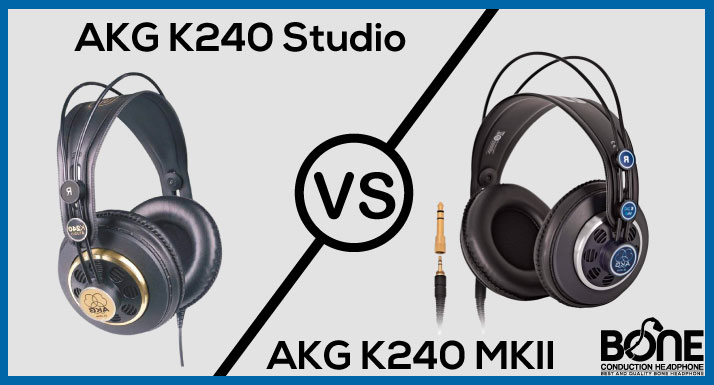
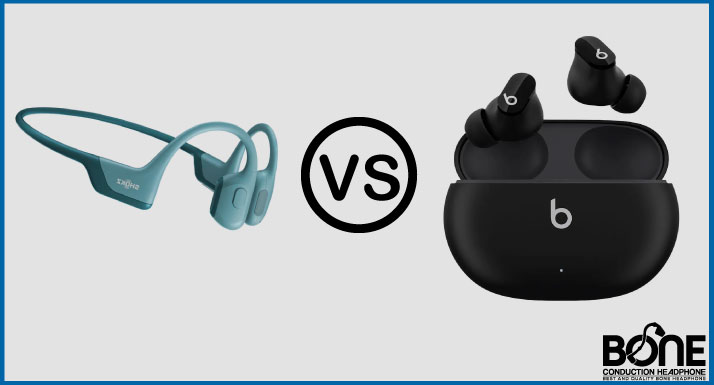
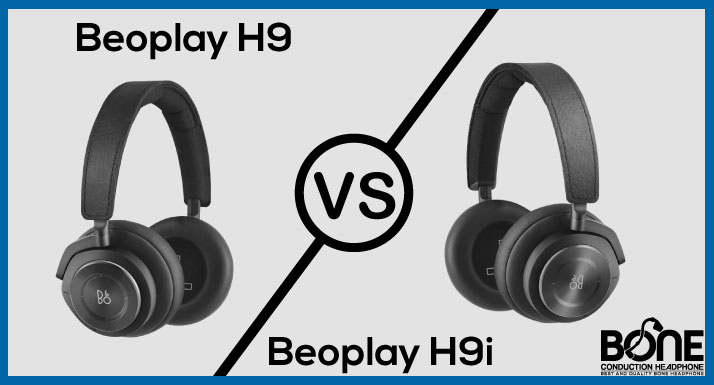
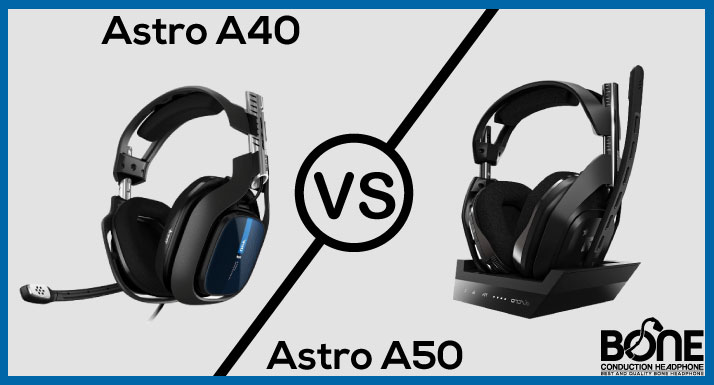
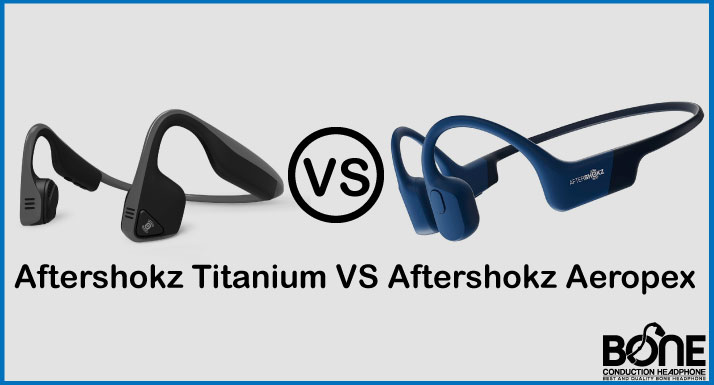
![SteelSeries Arctis 7 vs 9 vs Pro [Detailed Comparison Guide]](https://www.boneheadphonesera.com/wp-content/uploads/2022/06/SteelSeries-Arctis-7-vs-9-vs-Pro.jpg)